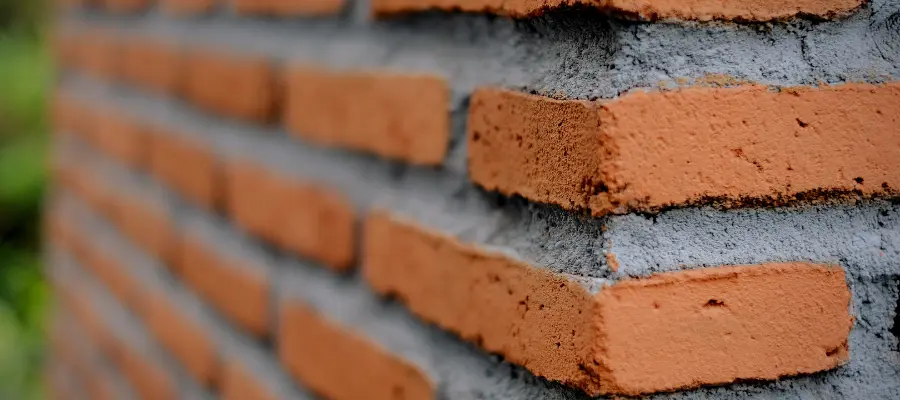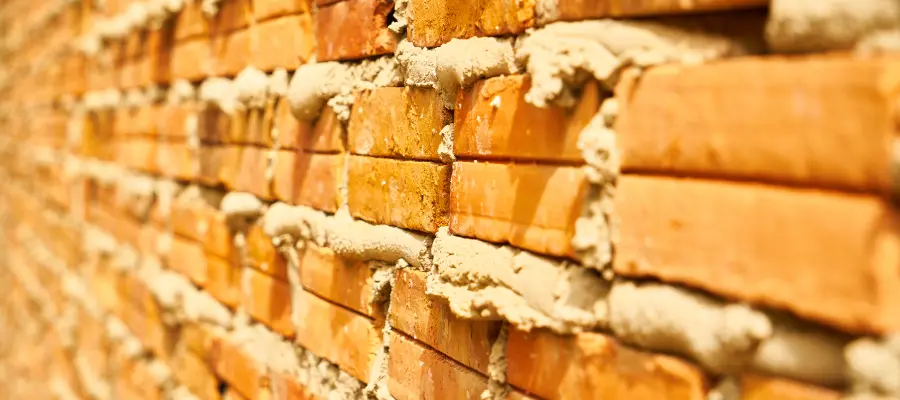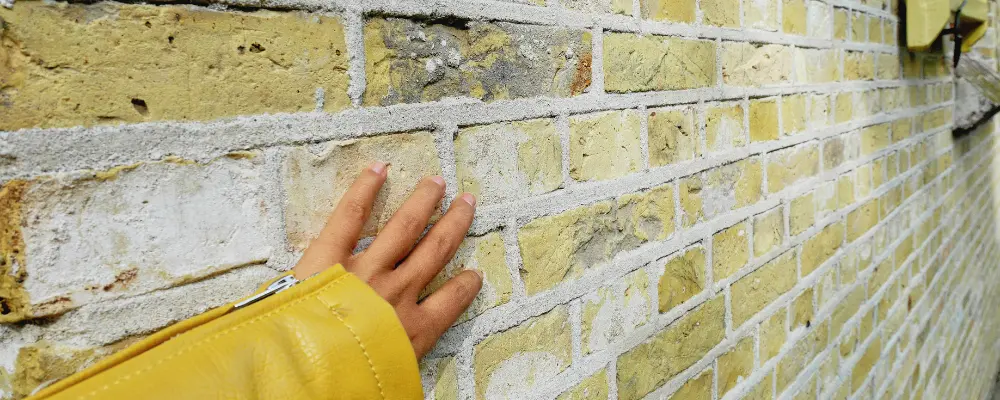Whenever you see walls in any structure, they are commonly made of bricks and stones. But how are they bound together? Mortar, a paste of cement and lime with fine aggregates and water, is the binding material there. Pointing is the process of finishing the mortar joints. Pointing prevents water from entering the brick and stone walls. Pointing also enhances the appearance of the walls. Want to know more about this?
Keep reading to the Brick & Bolt‘s todays blog to learn more about pointing in construction, its purpose, advantages and its types.
What are the Different Types of Pointing in Construction?

Pointing in construction has various types for specific requirements. Let’s understand some of the major types of pointing used in masonry
1. Flush Pointing
Flush pointing is the most broadly used and durable type of mortar pointing. In this technique, the inclined mortar joints are cautiously filled with mortar, and any excess mortar is carefully removed, to giving a smooth and seamless finish. By eradicating spaces that can gather dust or water, flush pointing helps improve the longevity and cleanliness of the structure.
2. Recessed Pointing
Recessed pointing is an attractive type of mortar pointing that involves filling the spaces between bricks with mortar and pressing it slightly inside the wall. This creates a small gap of about 5 mm or more, making the mortar line stand out less. The result looks good because the indented lines add depth and shadows to the wall.
3. Beaded Pointing
Beaded pointing is a method of finishing brickwork by pressing mortar into the gaps between bricks and then creating curved grooves using a concave steel tool. This gives the mortar lines a unique, rounded look, adding an elegant touch to the wall. While it looks great, beaded pointing is more likely to get damaged compared to other methods.
4. Struck Pointing
Struck pointing type involves two steps to get the mortar joint. First, the mortar is stuffed and pressed to be even with the bricks. Then, the top side of the joint is pressed inward, generating a slope of about 10 mm from the bottom corner. This sloped shape helps rainwater drain off quickly, reducing water buildup on the wall.
5. Rubbed, Keyed or Grooved Pointing
Rubbed, keyed, or grooved pointing type is similar to flush pointing. In this technique, the gaps between bricks or stones are filled with mortar and levelled with the wall’s surface. However, what makes this type different is the groove added in the center using a special tool. This groove adds a unique and appealing look to the wall.
6. Tuck Pointing
Tuck pointing is a detailed technique where the gaps between bricks are filled with mortar, and a groove is made in the center. The groove is usually 5 mm wide and 3 mm deep. What makes tuck pointing special is filling this groove with white cement putty, which sticks out about 3 mm. This creates a nice contrast between the mortar and the white wall putty, making the wall look more attractive.
7. V-Pointing
V-pointing starts by filling the gaps between bricks and mortar and making it level with the wall’s surface. What makes V-pointing unique is the V-shaped groove made in the joint using a special V-shaped tool. This groove gives V pointing its name and a distinct look.
8. Weathered Pointing
The weathered pointing type involves pressing mortar into the gaps between bricks and then, while the mortar is still fresh, pressing back the top part of the horizontal joints by 3-6 mm with a pointing tool. This creates a sloping effect from top to bottom, making the edges look weathered or worn down.
What are the Benefits of Pointing in Construction?

- Pointing protects mortar joints from weather and external damage.
- It seals gaps between bricks to prevent rainwater from causing dampness.
- Pointing adds strength and stability to the wall.
- It makes walls look better.
- Pointing helps prevent shrinkage and cracks in the joints, reducing wall damage.
- Pointing helps maintain the wall’s thermal properties by insulating gaps.
- It uses less cement for construction.
What are the Signs of Damaged Pointing?
Generally, mortar requires regular maintenance. Whenever you see the following signs, be ready to start repointing.
Damp Marks on the Wall
If you see damp marks on your walls, it could mean the pointing in the brickwork isn’t good enough. In those cases, water leaks through the wall and leaves marks as it moves down the wall.
Efflorescence
White deposits on bricks indicate water with dissolved salts seeping into the gaps. Eventually, these salts damage the bricks and make them look bad.
Precision is very important during the pointing process. If it’s not done properly, it will require repointing. So be careful of the above damage signs.
In conclusion, pointing is a major part of construction that ensures buildings are strong and look good. Knowing the different types of pointing in masonry, understanding their benefits, and observing for signs of damage will be helpful in protecting buildings and keeping them in good condition for many years.
Read More: Types of Bonds in Brick Masonry

